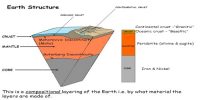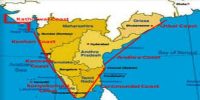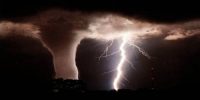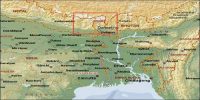An earthquake shakes the surface of the earth. An earthquake is a shaking of the surface, which results in the sudden release of energy into the Earth’s lithosphere, which produces seismic waves. There are many scientific terms that are difficult to understand, but once in a while scientists actually use words that make sense! The word ‘earthquake’ literally means shaking the ground. Geologists also use this term in the broadest sense when they know what happens under the ground which produces energy that causes tremor. Earthquakes can range from shapes that are so weak that they can’t be felt too violent enough to propel objects and people to the air and to wreak havoc all over the city. Earthquake or earthquake activity in a region is the frequency, type and size of earthquakes over a period of time.
There was very little understanding of the earthquake until the beginning of the 20th century when the earthquake began to rise. The seismology involved in scientific studies of all aspects of earthquakes has answered the long-standing question of why and how earthquakes occur. On the surface of the earth, earthquakes express themselves by shaking and displacing or disrupting the earth. About 50,000 earthquakes can be observed without the help of large enough earthquake materials that occur annually throughout the world. About 100 of these are sufficient if their centers are close to the settlement area, to achieve substantial erosion. When the epicenter of a major earthquake is located along the coast, the seafloor may be displaced as a reason for the tsunami. Earthquakes can also trigger landslides and occasionally volcanic activity.
Earth’s major earthquakes occur mainly in belts that coincide with the margins of the tectonic plate. This was evident much earlier than the initial catalogs of felt earthquakes and is more easily understandable in modern seismic maps, showing the way earthquakes are determined. The crust and lining tops create a thin skin on the surface of our planet. This skin, however, is not all in one piece – it is made up of many pieces of the earth’s surface like puzzle pieces. The most important earthquake belt is the Circum-Pacific Belt, which affects many populated coastal areas around the Pacific – for example, New Zealand, New Guinea, Japan, the Aleutian Islands, Alaska, and the coastal regions of the North and South America. It is estimated that only 80 percent of the energy released in the earthquake comes from those who have earthquakes in their belt. One of the most famous errors in the world is the San Andreas Fault in California. The fault runs almost the entire length of the state of California and is well-known for frequent earthquakes in the area.
The term earthquake is commonly used to describe the occurrence of an earthquake that is natural or caused by people producing earthquake waves. A recently proposed Theo suggests that some earthquakes may occur in a type of earthquake storm, where an earthquake will hit each earthquake successively by previous shifts, like distant rushes by an east shift, but will occur several years later and with a few subsequent ones. Earthquakes are as damaging as the first. However, the tremors of the earthquake can still be felt and can be felt and detected several hundred miles away from the center of the earthquake.
















